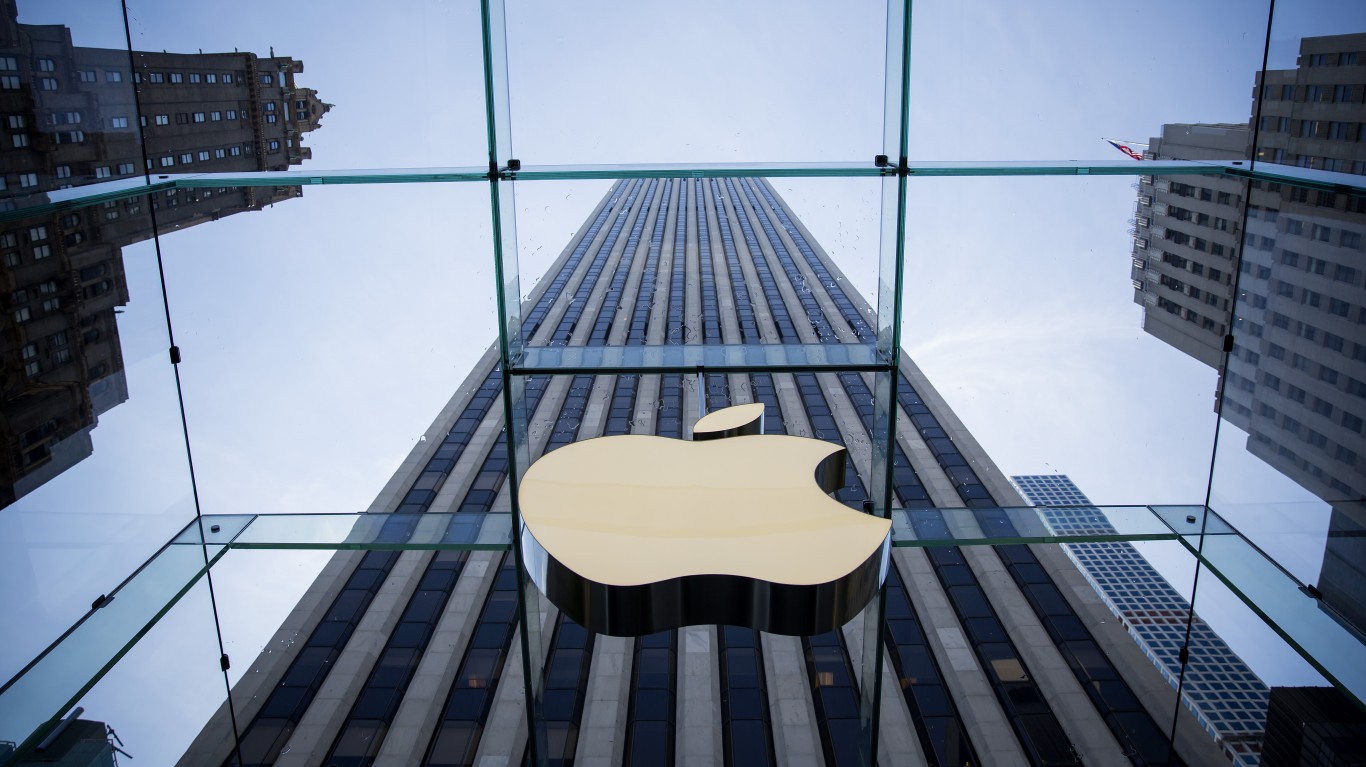
$1.5 trillion. For one day, an American company finally crossed that market-cap threshold.
Apple Inc. (NASDAQ: AAPL) broke the barrier on Wednesday, flying high on speculation about the release of the iPhone 12 and new custom ARM-based chips for Macs that could replace Intel components.
Along with Apple, Amazon.com Inc. (NASDAQ: AMZN), Facebook Inc. (NASDAQ: FB) and Microsoft Corp. (NASDAQ: MSFT) closed at all-time highs earlier this week. The tech giants have been riding an upward wave that also saw the Nasdaq Composite Index break the 10,000 mark for the first time.
But the party didn’t last long. On Thursday, markets plunged as an uptick of coronavirus cases around the country was reported. Investors were likely spooked by data suggesting that a full economic recovery will not come quickly.
The Dow Jones industrial average dropped 6.9% Thursday, the worst decline since March, when the pandemic first hit the United States in a substantial way. The S&P 500 fell 5.9% while Nasdaq saw a 5.26% decline.
Shares of Apple closed Thursday at $335.90, down 4.8%. That took the Cupertino, California-based tech giant’s market cap down to $1.46 trillion. Even with Thursday’s hit, Apple is up 14.39% year to date, beating the S&P 500, which is down 7%.
Analysts Weigh In
After dropping below $225 per share in late March, Apple has enjoyed an impressive rebound. Analysts have taken note, with lots of reports coming out this week.
On Thursday, HSBC upgraded the stock from Sell to Hold, as analyst Nicolas Cote-Colisson sees long-term opportunities for Apple’s services segment. “The pandemic will, in our view, create more demand for health-related tools and Apple could play a large role in addressing that demand,” he said. Healthcare is already among the largest economic segments in most developed countries.
HSBC raised its price target from $225 to $295, still below the current value. Wells Fargo boosted its target this week from $315 to $385. Its analysts said there are signs of a post-coronavirus recovery in the smartphone market. The expected introduction of 5G on the iPhone 12 should help Apple, they noted.
Blue Line Capital’s Bill Baruch agrees with the notion of a 5G boost. He told CNBC Thursday that consumers will be upgrading to 5G devices over the next 18 months. The shift should rejuvenate Apple’s revenue stream, he said.
Also this week, Bank of America and JP Morgan Chase & Co. reiterated their Buy ratings. BofA’s target is now $390 while JP Morgan’s is $365. Deutsche Bank on Wednesday boosted its target from $320 to $350.
The average 12-month price target of $309.71 comes in below the current price. The stock has 28 Buy ratings, 12 Holds and three Sells.
A WWDC Boost?
Investors should keep an eye on Apple’s Worldwide Developers Conference (WDCC), being held June 22-26. This year’s event is online, of course, but that doesn’t mean big Apple news won’t be coming.
Apple typically unveils product launches and enhancements at the WDCC, a flashy and buzz-generating affair. On Thursday, Apple said this year’s event will be the largest ever, since it’s being held in cyberspace.
All 23 million members of the Apple developer community can attend for free. The keynote will be streamed on June 22 on apple.com, Apple TV, YouTube and other outlets. CEO Tim Cook typically gives the keynote, just as Steve Jobs once did.
What’s on tap this year? Well, we can’t know for sure but there are clues.
As mentioned earlier, many Apple watchers expect the company to unveil its first 5G-enabled phone. For over a decade, phones have run on current 4G networks. 5G networks, which are being rapidly deployed across America, will run at speeds 20 to 50 times faster.
5G-enabled Android devices have been on the market for a while, but Apple has been holding back. Analysts expect that to change with the iPhone 12, which could be unveiled at WWDC.
Over the course of a year or two, between 1.5 billion and 3 billion people worldwide could be upgrading their smartphones to 5G models. For companies like Apple and Samsung, the opportunity to add revenue runs into the tens of billions of dollars.
One caveat is that consumers need to be convinced of the value of 5G. Experts predict the development of new applications that will require 5G speed, but it may take time for consumers to see what the increased bandwidth can do for them.
While iPhone sales have dropped as a percentage of Apple’s total revenue, they are still the largest driver of the top line. They accounted for $29 billion of total revenue in the most recent quarter.
5G could be the catalyst for a resurgence in iPhone sales. In the meantime, the drop in iPhone sales may have been partially offset by strong sales in the app store.
At some point, Apple will also need to make the Apple Watch and iPad 5G compatible. It’s another factor that could push consumers to upgrade those devices more quickly.
Apple may also announce a long-expected move away from Intel chips in its Mac computers. Apple reportedly will be using technology from Arm Ltd., a division of Japan’s Softbank Group Corp., to build its own custom chips.
An Unexpected $100 Million Investment
While many corporations have made supportive public statements about the Black Lives Matter movement and recent calls for police reform, Apple is opening its wallet, in a big way. On Thursday, the company pledged $100 million to a new Racial Equity and Justice Initiative.
An Alabama native, Cook said the funds will support programs around education, economic opportunities and criminal justice reform. He said the program will initially focus on the U.S., but eventually will support minority groups in other countries.
The program will be led by Lisa Jackson, the company’s vice president of environment, policy and social initiatives. She is the former EPA Administrator from the Obama administration.
Cook said Apple will aim to increase spending with black-owned suppliers, and expand work with historically black colleges.
Internally, Apple will strive to increase minority representation in its workforce, Cook said. This has been a challenge for many tech companies, but Cook said the burden is on tech leadership to increase diversity.
The idea is that an employee base that accurately represents society is better able to serve it. Apple is making a big bet that this will be good for business.
Thank you for reading! Have some feedback for us?
Contact the 24/7 Wall St. editorial team.



